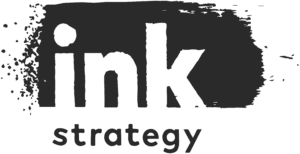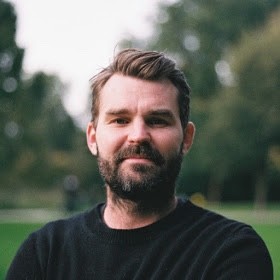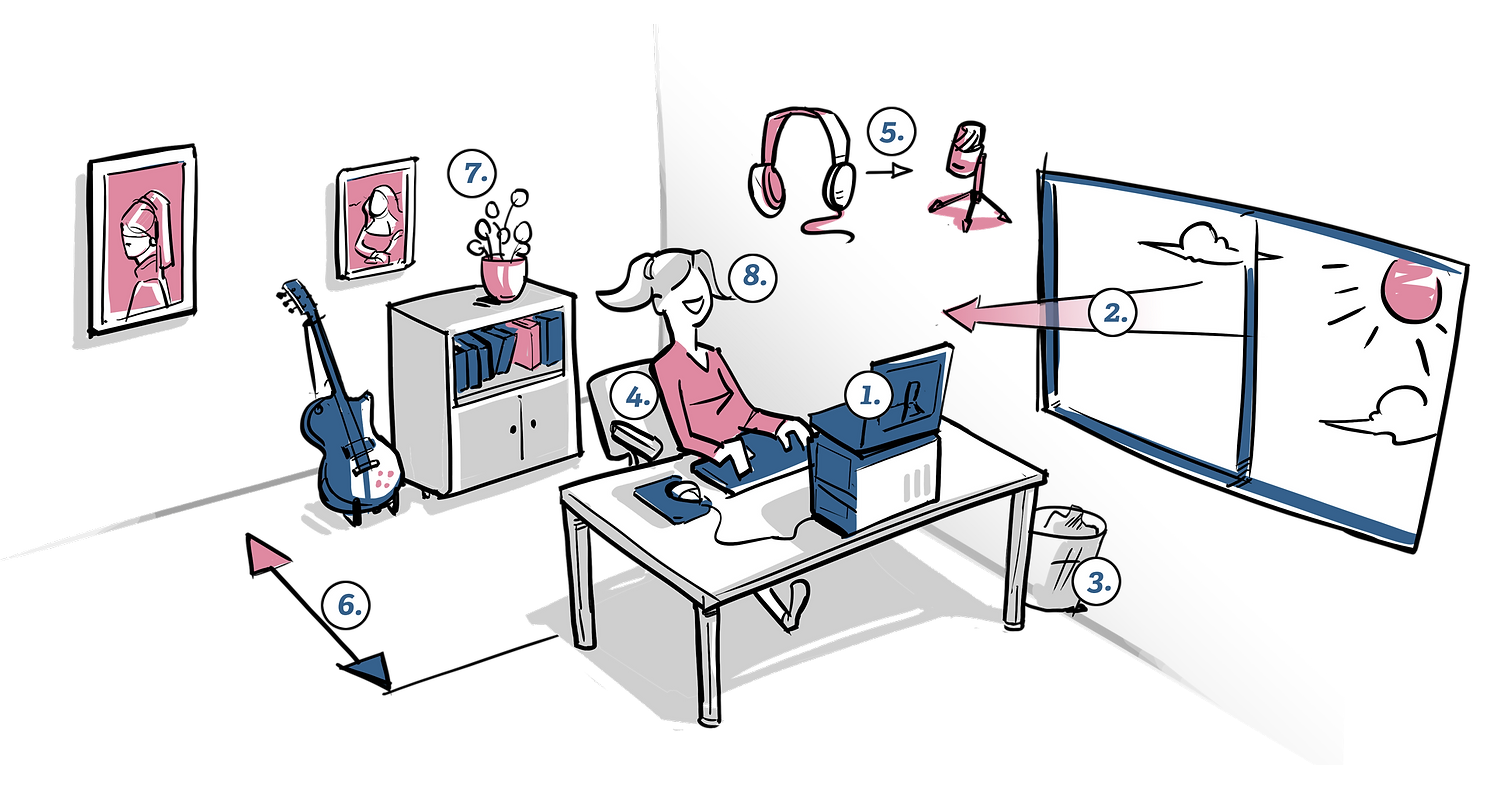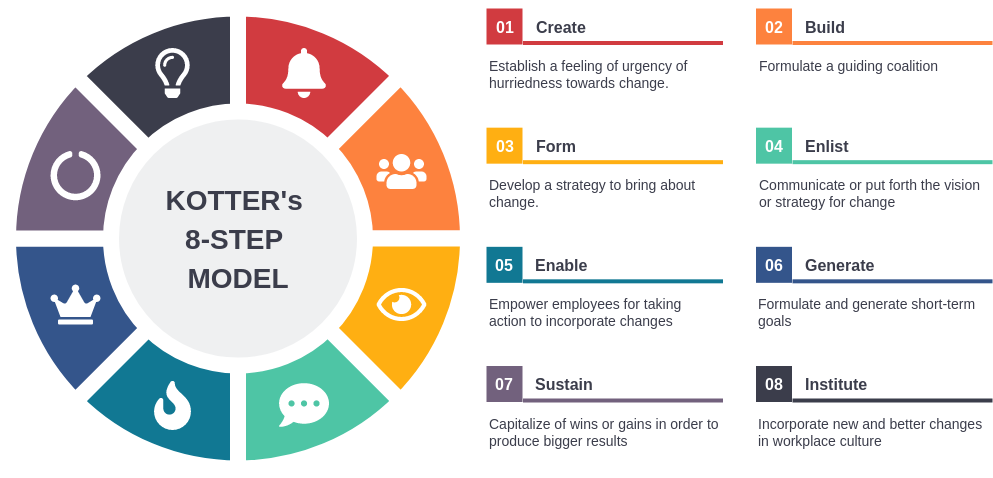Het lijkt erop dat remote meetings hier blijven. Lees meer over hoe je het maximale kan ha...
How an image conveys vision more effectively is something most of our clients understand intuitively. Less known and understood beforehand is the added value of the design process we go through.

Designing the future of our organisation
A good way to understand the value of design in business is by comparing the board designing a successful organisation with a family building a new home.
When the family decides to build a new house, they invite an architect. While talking to the family and asking questions, the architect draws out different concepts to try and meet the wishes of the family members. All members have their own ideas, but the architect helps to flesh out and combine the ideas: when the father asks for a large kitchen, the drawing clearly shows this reduces the garden that’s so important to the daughter. Looking at the sketch, the mother proposes to move her study that was plannend on the ground floor to the attic. By doing so, they create space for both the kitchen and the garden while the study will be more quiet. Step by step it becomes clear how to turn the house into a home for everybody and how that would look.
It’s thanks to the sketches of the architect that the family moves from abstract discussion into clear agreement. When the visual result is ready, it’s almost as if the house is already there and nobody can wait for it to become real. During construction, the daughter uses the drawing of the house to instruct the gardener, while the father uses the drawing to explain what kitchen equipment they need. When all is ready, there are no unwished for surprises as the result is in line with what the family mutually decided on.
An organisation with many departments is just like a house with many rooms. The board and employees are the family. Stakeholders, partners and clients of the organisation are the gardener and the person selling the kitchen. You could consider the facilitating architect to be Ink Strategy.
Transformation is needed to sieze the opportunity.
Organisations face new developments on a daily basis. That’s why innovation and agility are usually high on the agenda. In most cases it’s catch up, or get left behind. In other words, new opportunities come with the challenge to change. A few examples:
- It’s not that long ago that waterfall based planning over a 2 year period was the norm. Today, client demands, competition and the environment change so fast teams need to adapt continuously if they want to reach any useful results. Hence, mentality, competencies and the way of working have to be changed accordingly.
- New technologies open up new possibilities – all the time. To name a few: automation, personalised services, data analytics, e-services and virtual reality. If it’s not you that adapts to, and integrates new technology, competitors will.
- Surely you are able to think of a thing or two that needs to change in your organisation.
While opportunities are huge, usually the change that’s needed for organisations to sieze the opportunity is equally large. This time has much to offer, at least for those organisations that manage to creatively shift and shape to meet tomorrow (and today).

Vision is conditional to successful transformation
So, change is a given, but research shows 70% of all business transformations fail. The main reason being the lack of a shared vision for the future, or because this vision is not communicated. When people don’t know what they are working towards or why, they either move in the wrong direction or show rigidity and resistance when creativity and flexibility are needed. In other words: for a transition to be successful, a shared vision to guide and fuel the change is key.
Take the example of a bank aiming to automate the way it offers and sells mortgages. If they are not thoroughly involved in how the bank sees and navigates towards it’s future, bank employees will (want to) stick to the old and familiar way of personally tending to every customer. When the vision of management does not reach people throughout the organisation – or insufficiently – employees will not feel supported, engaged and inspired to bring the vision to life. As a consequence, change does not happen.
Prerequisites for vision-driven transformation…
We already showed the importance of vision for change to happen but what does this mean in practice? In the following we explore the concept of vision-driven transformation. Over the course of many years we have found a number of prerequisites for vision and successful transformation to apply:
1.Vision provides direction

The vision provides direction by showing the bigger picture of the desired future. A good vision is clear on the essence of the desired future, but does not spell out all the details. The more you know about a topic the harder it gets to separate the essential from the bulk, but thats what a good vision needs: it allows us to grasp the main idea of where you want to go in a blink.
2. Vision clearly identifies the why

People want to know why a particular direction is chosen. That’s why a good vision addresses the ‘why’. When defining the why of a transition it’s important to realise different stakeholders have different interests. For example, automation of a process can cut cost for management, free up time for more interesting work for employees and lower the price for customers. It’s important to address all of these reasons to change in your vision.
3. A vision is practical.
The vision practically shows what is aimed for instead of using business jargon and abstract concepts. Imagine you are at a party. You’ve had a few drinks, the music is nice and you discover some cool people dancing. Then, this other person comes up to you and starts talking about a reorganization, meeting customer demands, an IPO, return on investment, process optimization.. You probably get the point: people don’t like business jargon – not while at a party, not so much while at work either. It’s dead language, uninspiring, void of meaning – it’s hard to understand what it means. That’s why a good vision shows concrete examples of what is aimed for instead of using abstract concepts.

4. A vision is co-created.
The vision is collectively defined by the management and shared with key stakeholders throughout the organisation for feedback. An organisational vision isn’t designed by one visionary sitting at the top of the pyramid. A strong vision needs different perspectives that are brought in by different people. That’s why a structured conversation between various people that enables them to combine and build upon each other’s ideas is very effective. This does not mean to bring everybody to the table right away. It’s best to start with a management perspective, then share the draft with a broader audience to gather feedback.

5. Overal vision is translated all the way ‘down’
The overall vision for the organisation is translated all the way ‘down’, from department, to team, to person. An overall vision should focus on the essence, while at the same time there is a clear need for more in depth information. Departments, teams, and individuals will always ask: “What does this transformation mean for me?”. In deep dives, the vision should be broken down in sub chapters. The goal for any vision-driven organisation should be that all structures, products&services, and individual acts can be explained from the overall vision.

6. The vision is, and remains visible to everyone.
For a vision to drive change and get real, it should be visible and experienced in various ways, and on a frequent basis. There is no harm in repeating the message over and over again: posters on the wall, email signatures, a movie, ambassador sessions, internal media campaigns, you name it. All to support and drive matching behaviour to make it all come true.

7. All employees can connect to the vision.
An organisation is made up of its people, it should be the same for vision. This means that a vision has to be told, shared, and lived by the people. This does not happen automatically, the best way to achieve this is to facilitate a process of story building (rather than story telling).
The idea is that the vision story is built, enriched and made more robust every time it’s told. No matter who talks about the vision, all stories should essentially convey the same idea, but how it’s told and what details are shared vary depending on the person sharing the story. This way of story building helps people connect to the vision on a deeper, personal level and thus find meaning in their work. At the same time, ownership is significantly strengthened and the vision anchored in the organisation.

Why vision should be visual
The word ‘vision’ is telling, a strong vision asks for a visual image. Text has come to dominate much of our work but isn’t always as effective. Most visions in text take long to grasp, don’t speak to our imagination, leave very little room for the reader and are read once at best before disappearing in a bin or inbox.
In other words, vision in particular should be visual and that’s why we always literally design a bigger picture of the vision.
The bigger picture in the blink of an eye
By sketching the vision it becomes clear to everyone how vision, goals, organisation and culture correlate – to see the whole and how it interrelates leads to deeper insight, better decisions and stronger involvement. It’s hard to get this result with text and even when you manage to get it in writing, it demands a large investment of the reader to understand it – an investment too high for most people focusing on their daily work.
Visuals, dopamine and motivation
There’s another advantage of using images, which is related to how our brains work. Reading about somebody drinking a cold coke might stir desire, but won’t ever beat actually seeing it happen. This has to do with dopamine. Our brains produce dopamine when we see things. Dopamine in turn boosts motivation – to get a coke for example. The same holds true for a vision: when shown instead of read, people will grasp it better, ’feel’ more inspired and driven to get there.
Visuals, an invitation to tell your own story
As stated, a good organisation vision only shows the essence. Exactly because it doesn’t spell out everything, it invites employees to engage with it. Imagine a romantic partner you knew everything about there is to know. Even though this might seem a tempting idea at first, surely the relationship would lose it’s magic leaving us ‘disengaged’. In the same vain, a vision should not spell out everything but invite us to dream, to use our own imagination and creativity. That’s why the storytelling and storybuilding mentioned before is such an important part of working towards your goals. By telling our own stories about the vision we connect to it, show more personal leadership and greatly enhance the agility of the organisation.
Advantages of a visual design approach
There are several clear benefits of using a visual design approach to facilitate the process.
1.Boundary object
Visualising the main messages real time has the advantage of creating a ‘boundary object’. Because there is a visualisation to talk about, it’s much easier to structure discussion, build upon ideas, and keep contributions relevant. Instead of separate thoughts that don’t come together, and dissolve into thin air after the meeting, participants of our sessions mutually build an holistic metaphor that addresses and connects everything. Mutual understanding is high, and progress is swift.
2.Iteration
Using visual design to define vision means we quickly try out many different versions. Taking one metaphor for the vision, and participants actually seeing it, then telling the story in practice usually leads to new insights on how to improve very quickly – insights that would not have come up so fast without the iterations.
4.Inviting a creative part of the brain
Finally, thinking visually activates other parts of the brain than we are used to. It’s as if, by using visual facilitation, we’re inviting a new creative force to the table and tackle challenge. This can lead to refreshing ideas or smart solutions.
3.Taking the sting out
Quite often there’s debate about the content of the desired vision. We’ve experienced that taking a visual approach really helps to take the sting out of the debate. On the one hand because making it visual reduces the complexity and makes really clear what the problem is, on the other hand because drawing simply is an artful and sympathetic activity that get’s people inspired and increasingly willing to cooperate.
Methodology
There are several clear benefits of using a visual design approach to facilitate the process.
Uitlijnen

Determine a mutual organisation vision
- determine scope, target group and essential building blocks of the vision;
- reach agreement in core team on the vision;
- deliver a visual metaphor for the vision.
Engage

Bring vision to life through storybuilding and deepening vision
- connect personal experience to the vision and facilitate story building – personal leadership;
- translate the over-all vision to different departments
- make employees experience the vision everyday (animations / posters / movies / web platform)
Activeer

Add KPIs and operational plan to vision
- determine kpi’s for the vision
- design a matching roadmap
- actionplanning
Recente posts
Eén ding is zeker: onze wereld verandert voortdurend in een snel tempo. Om relevant te bl...
For most of us, work has become a centerpiece of our personality. What work we do is often...




